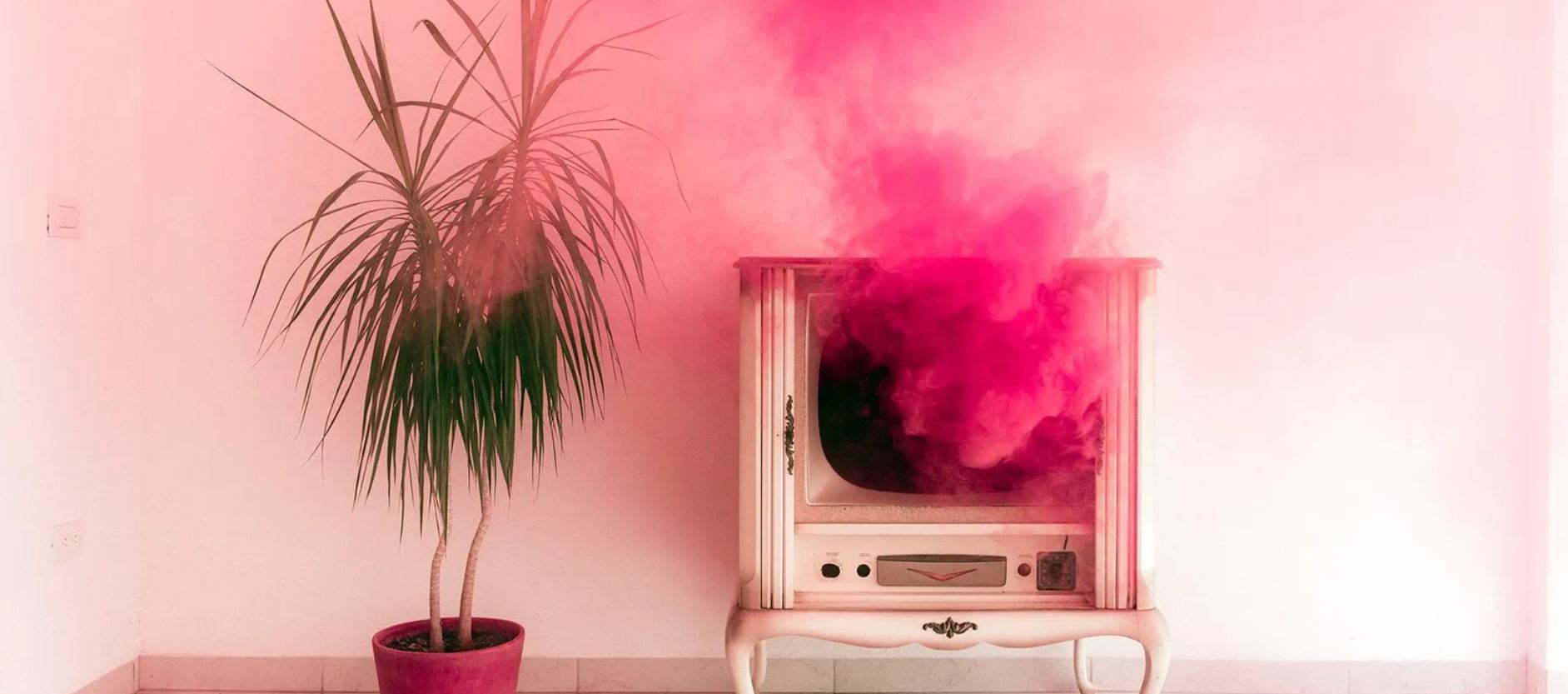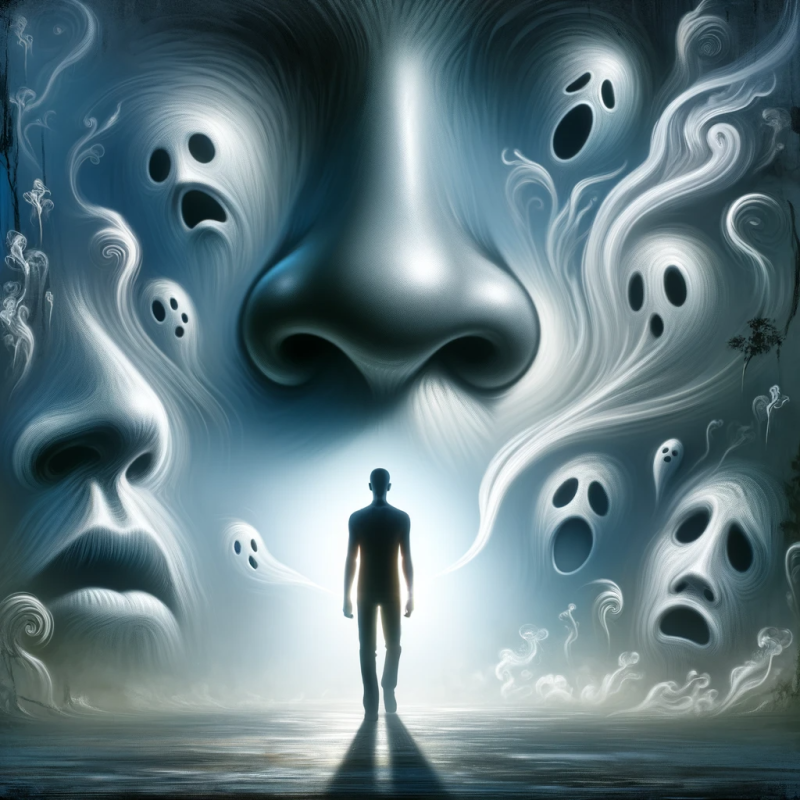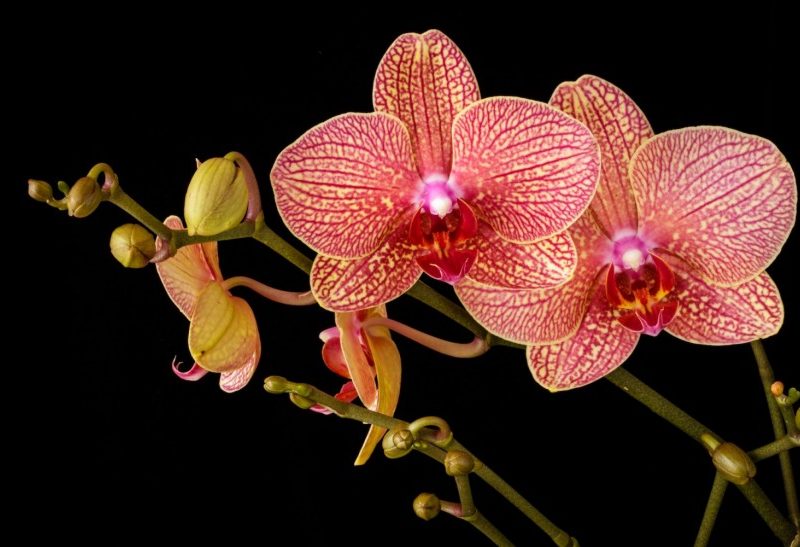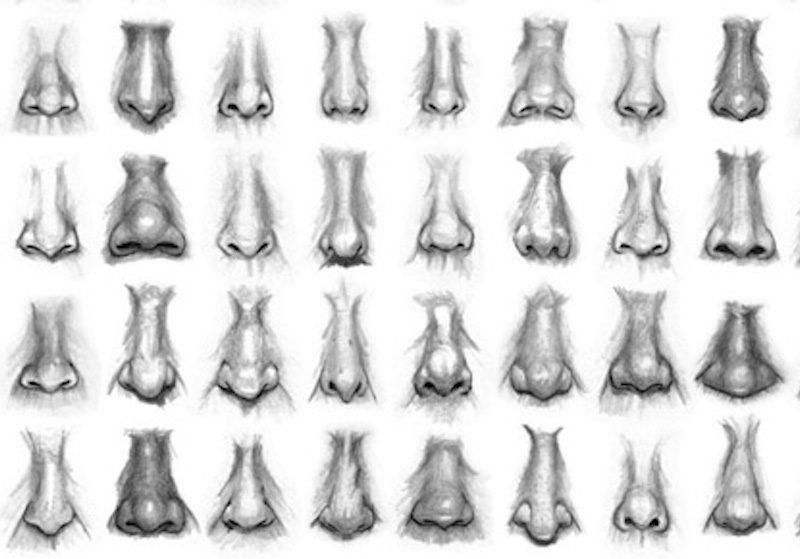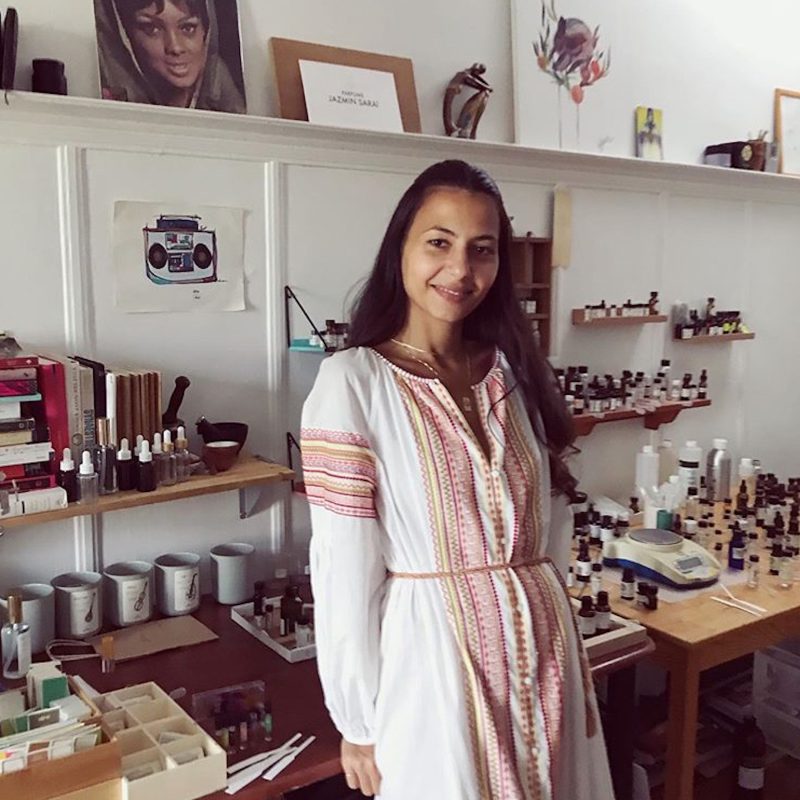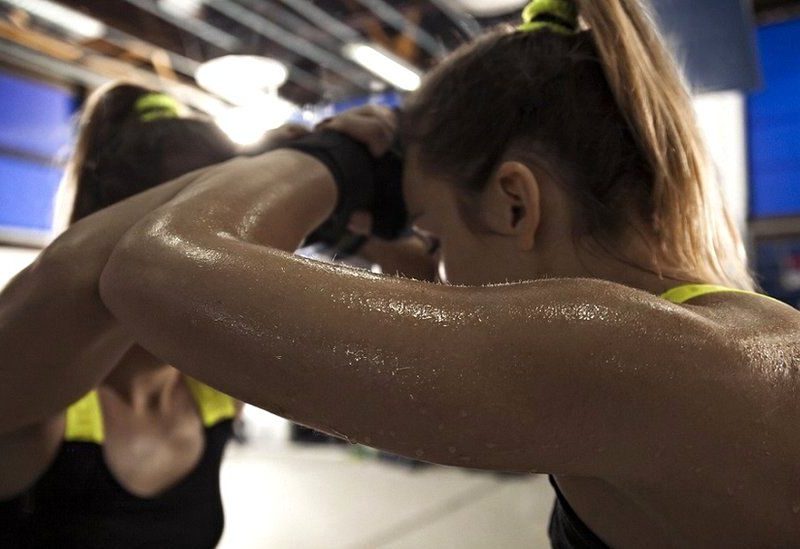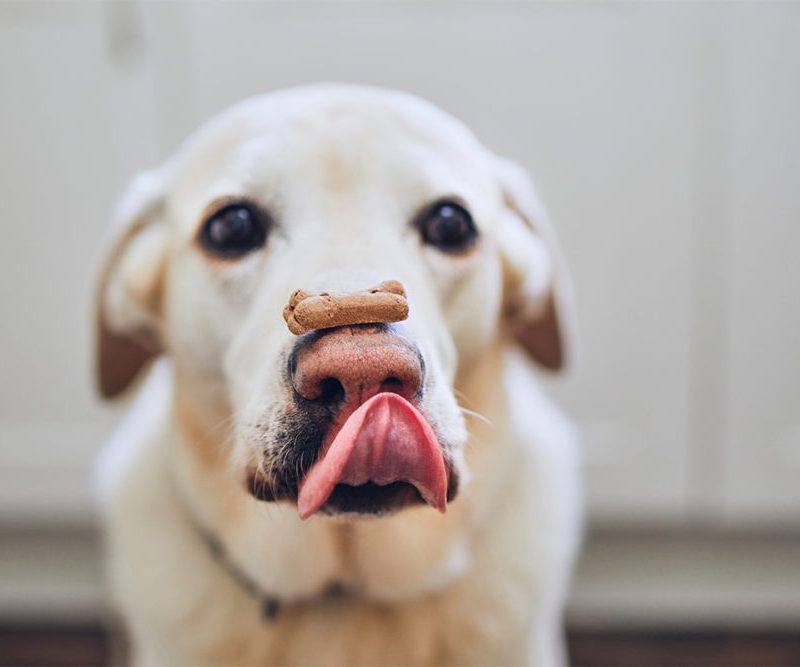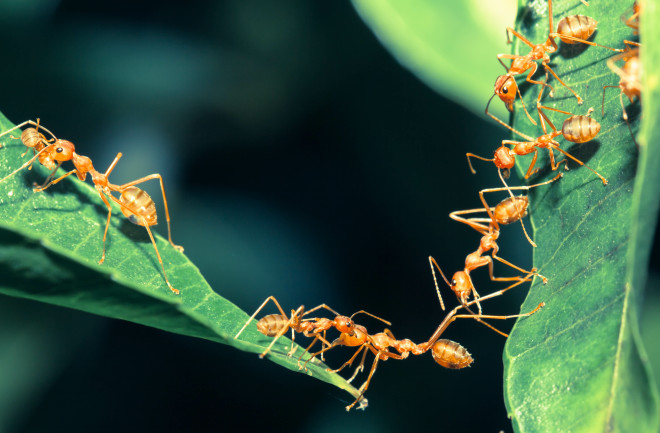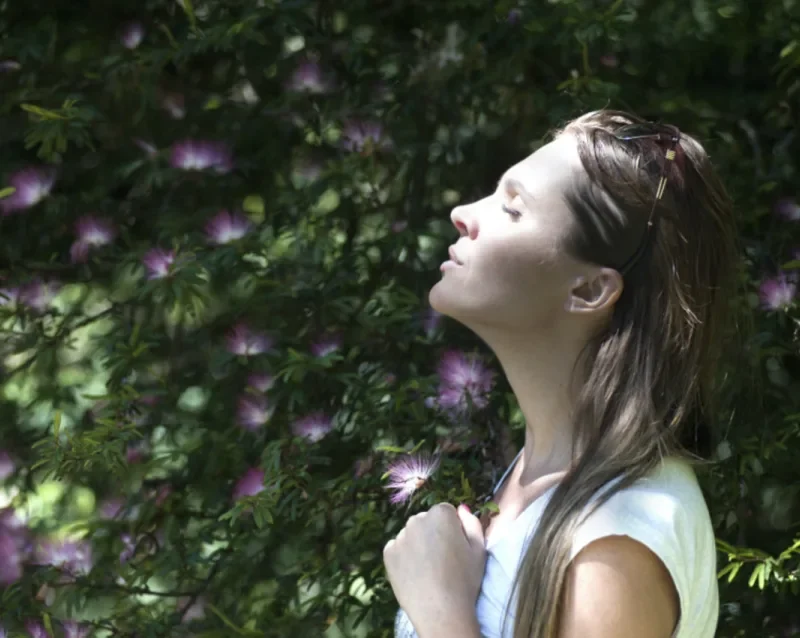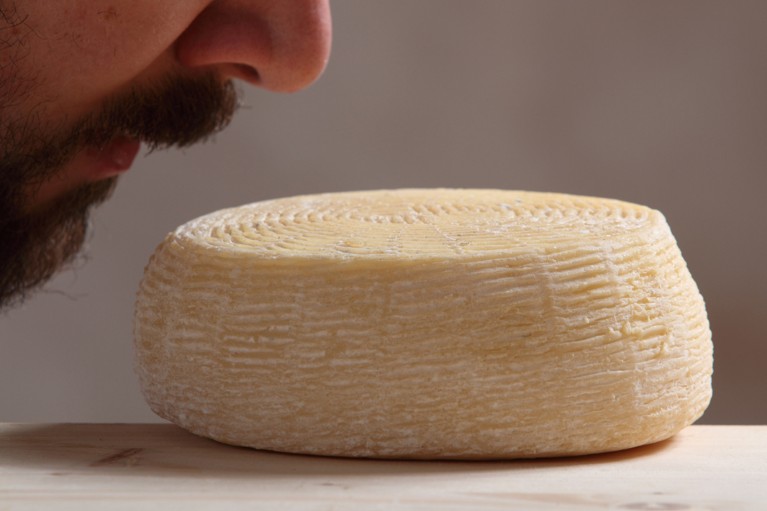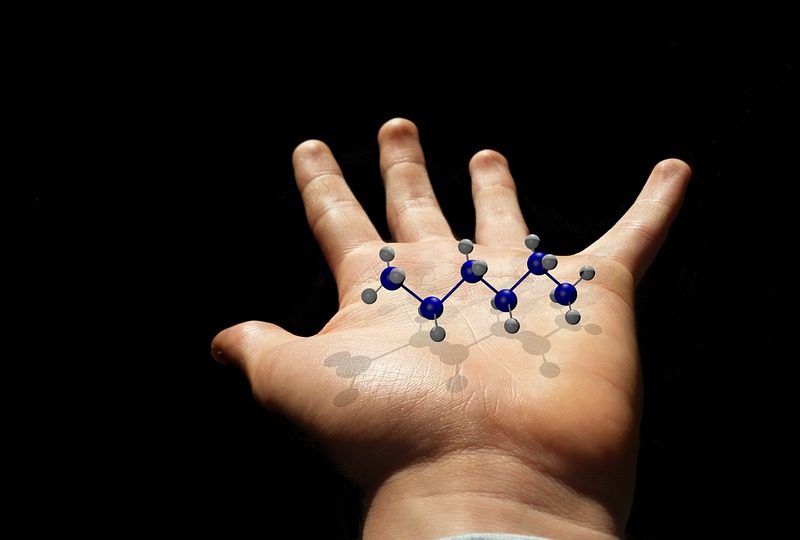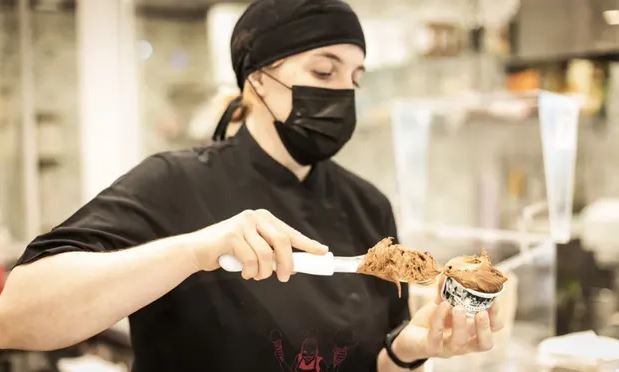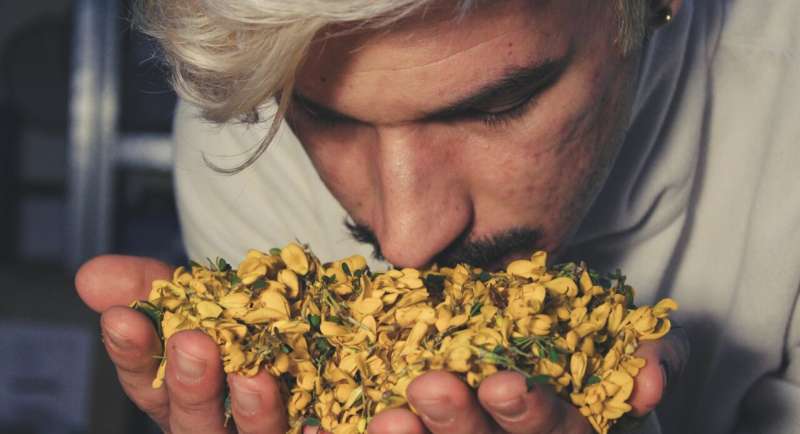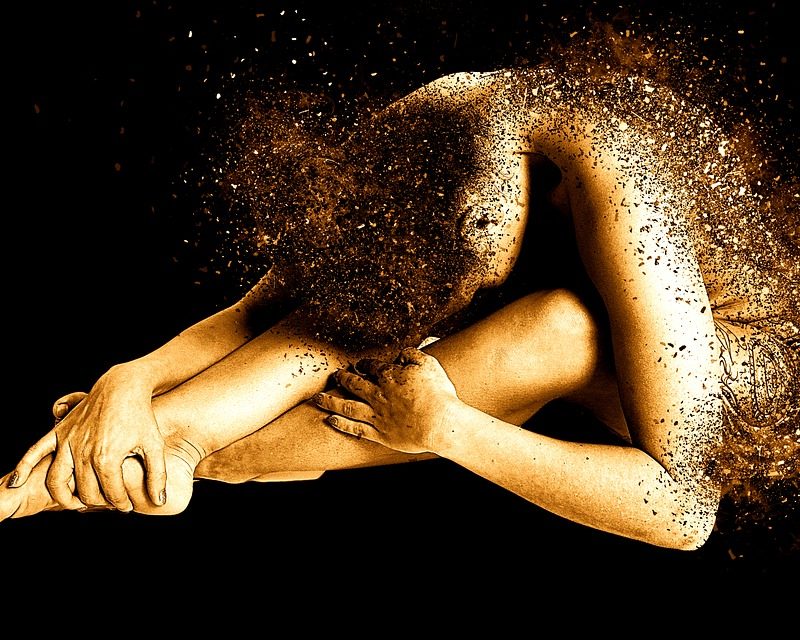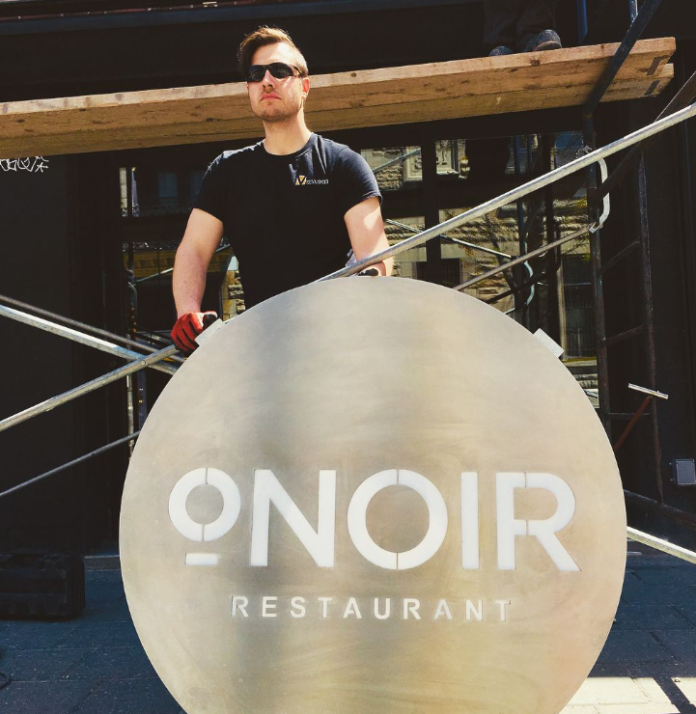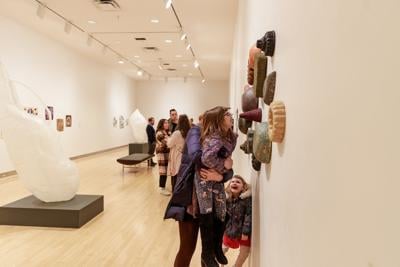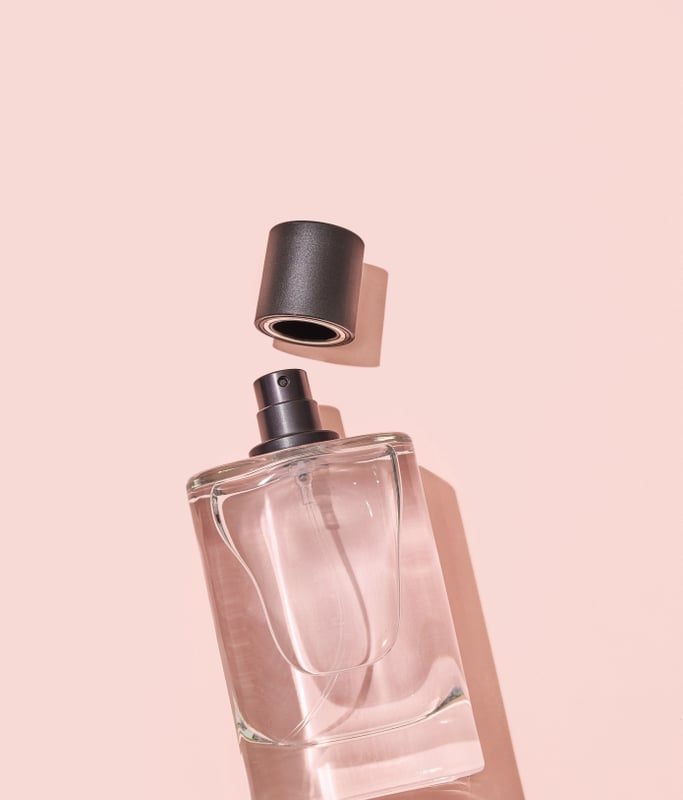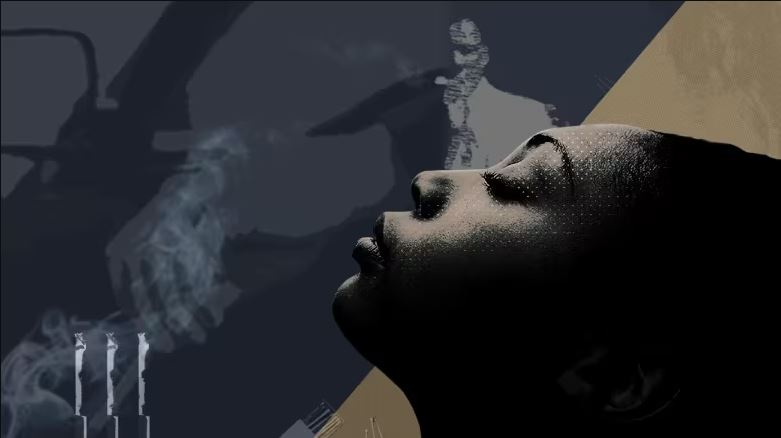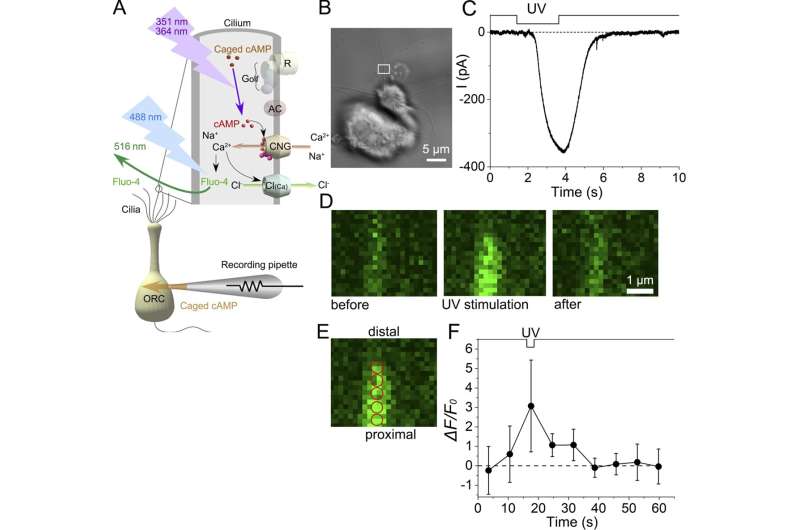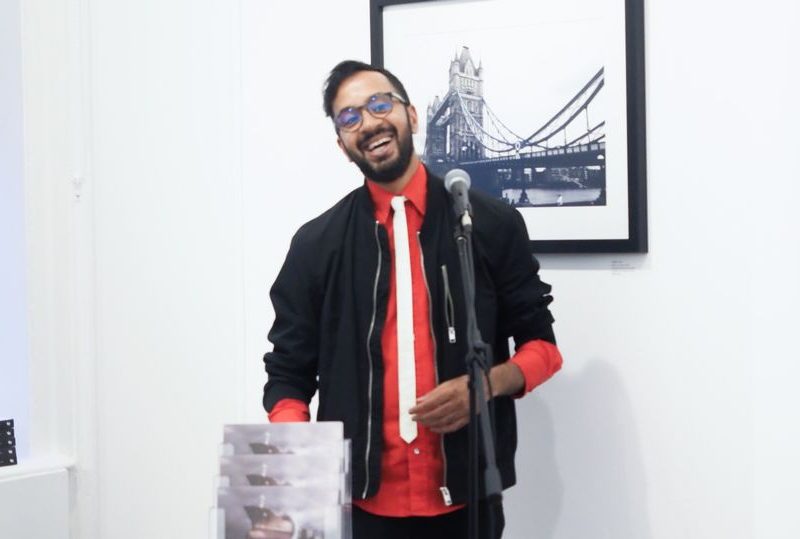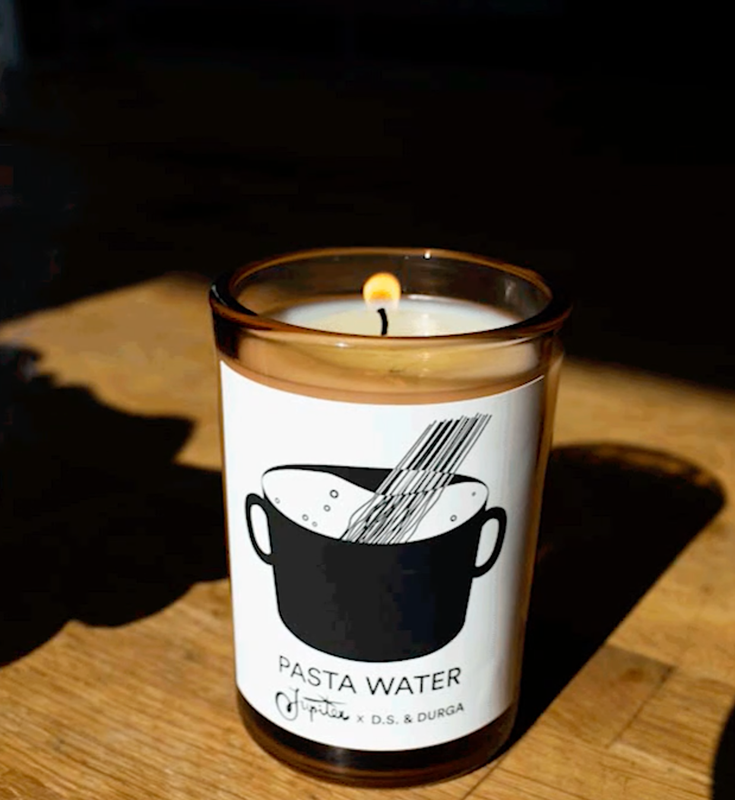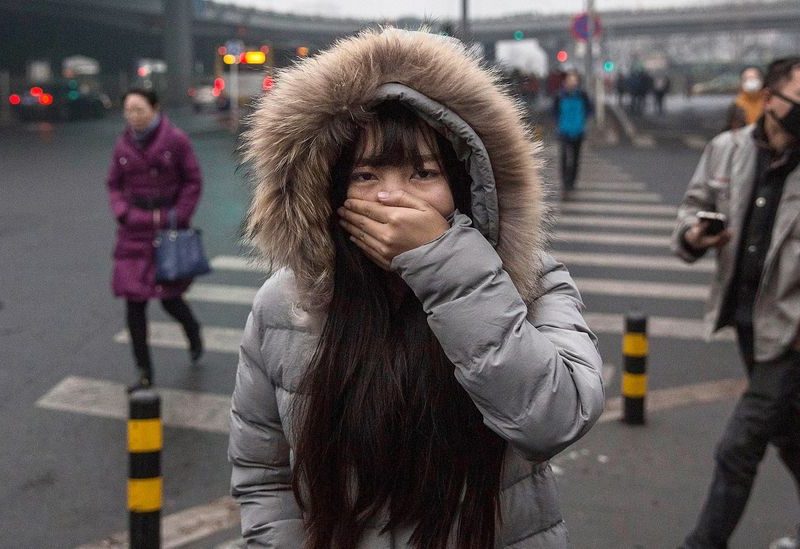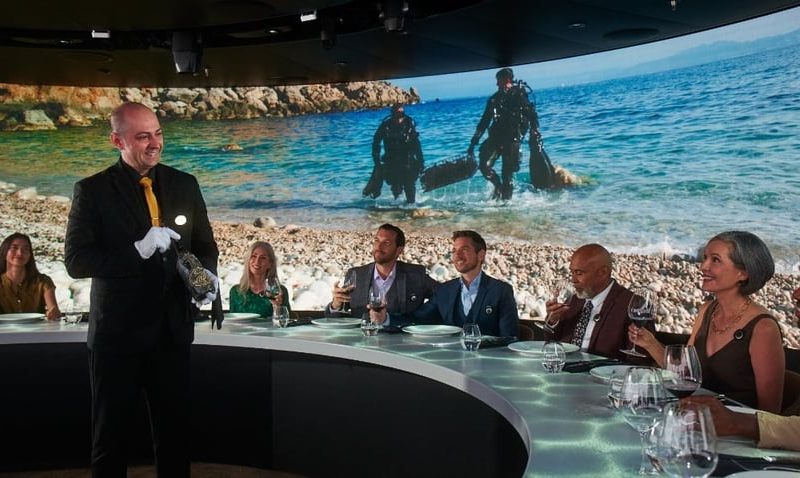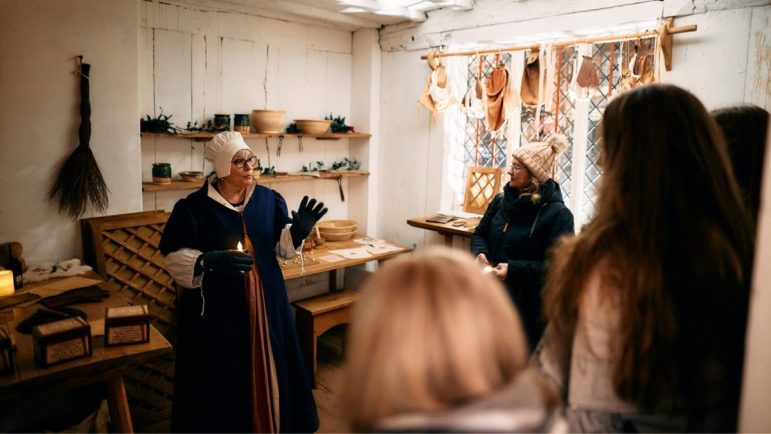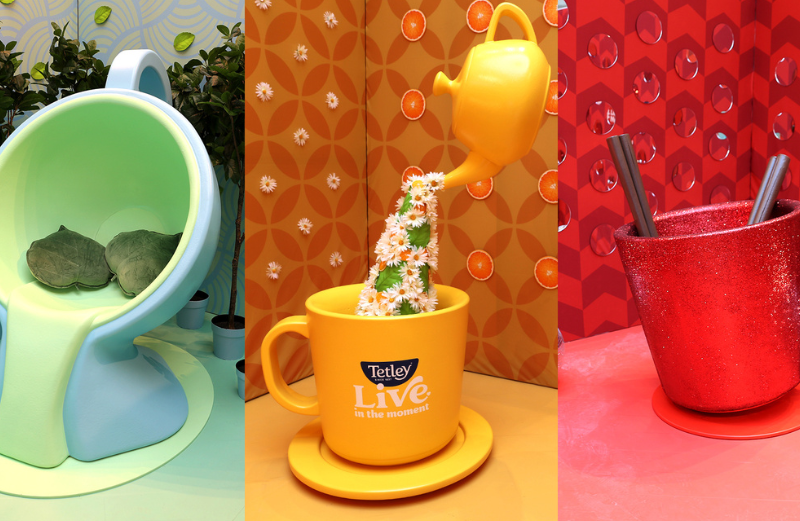The people who want to send smells through your TV
Frederik Duerinck isn’t a jeweller, but his next project is a necklace. This piece, though, doesn’t feature a precious stone as a pendant, but rather a small box. Right now, it measures a slightly unwieldy 5cm by 5cm (2in x 2in), but Duerinck is determined to shrink it down to the size of a die. It is no simple ornament either.
Inside the cube is a battery and scenting system designed to deliver a puff of fragrance on demand that Duerinck describes as a “scent bubble”. The Netherlands-based entrepreneur is the co-founder of startup Scentronix, which already operates a perfume printing machine. That device uses an algorithm to build a bespoke scent based on a customer’s answers in a questionnaire. But now Deurinck wants to deploy the same technology in miniature so that digital scenting can be mobile.
Wear one to the movies, for example, and you could use an app on your phone to program it to play along, dispensing discreet scents at key moments. The ultimate device is nowhere near ready, Duerinck acknowledges – its current size and battery life are hurdles, as is the quality of the scent and the projection. But he remains optimistic. “We have proof of concept with our prototype, and there’s nothing out there right now which works that way, so we’re applying for a patent.” The next step, he hopes, is to finesse it enough to win over investors and secure funding for further development on a wearable version.
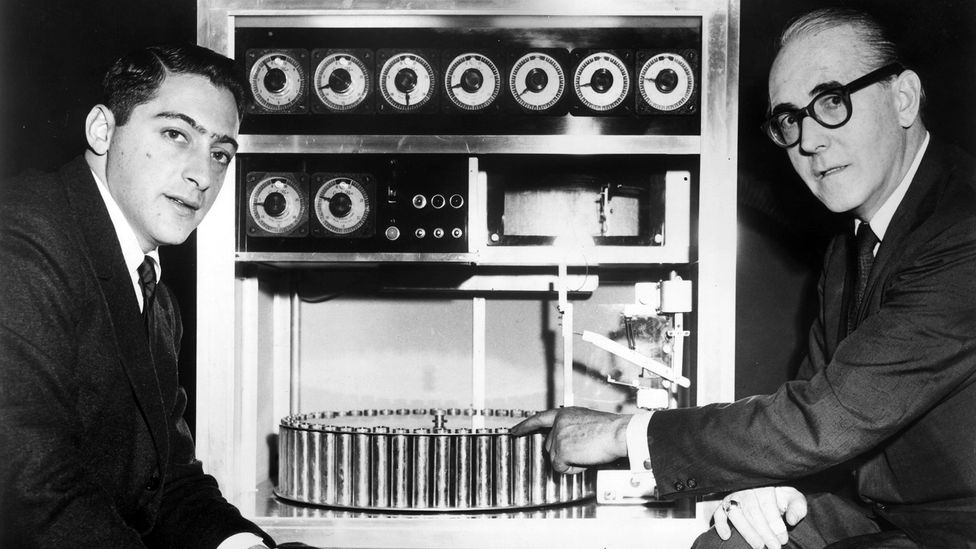
Smellovision aimed to combine odours with onscreen action but failed to find commercial success (Credit: Hulton Archive/Getty Images)
Duerinck, of course, isn’t the first to try to deliver scents on demand to people’s noses in an attempt to create a more immersive sensory experience. He’s also aware that it’s an Ahabian quest that’s bested many entrepreneurs before him.
Even the Ancient Greeks are thought to have tried it. One ancient poem recounts how doves’ wings were doused in fragranced oils to spread scents among guests during a feast. As the birds flapped their wings, the aroma spread over the assembled crowd. Perfumes and incense have also long played an important role in religious rituals and ceremonies.
In the movie era, attempts to add scent began as early as 1916, when one cinema owner accented a showing of the annual Rose Bowl American Football game with rose oil.
Then came Smellovision (or, as it was initially called, Scentovision). Unveiled at the World’s Fair in New York in 1939, it was little more than a series of pipes attached to viewers’ chairs through which a projectionist could deliver smell in sync with the images they were showing. The technology only gained popular attention in 1960 when it was revived in slightly simplified form for the release of Scent of Mystery.
You might also like:
- Why some people become super smellers
- The people saving scents from extinction
- The power of our hidden senses
A thriller starring an uncredited Elizabeth Taylor, key plot points were accented with scents piped into the auditorium at large, such as when the assassin smoked a pipe. The film, and Smellovision itself, was a flop, largely because the scent technology worked so poorly – a hiccup in timing could cause problems, and the scents were too diffuse to give a satisfactory experience. Clearing an odour in a timely fashion for the next to waft freely was also troublesome.
A rival system, known as Aromarama, displayed similar shortcomings.
As the world of entertainment has become more high-tech, odour remains the one element that is elusive and hard to replicate
The filmmaker John Waters tried scratch and sniff cards to accompany his movie Polyester in the early 1980s, but no other filmmaker copied his gimmick. In the 1990s, an Oakland, California-based startup, DigiScents, launched its iSmell concept, raising $20m (£12.5m) in funding for an at-home device it said would work by plugging into a computer’s USB port. The smell would be generated from a replaceable cartridge, much like an inkjet printer. This dongle, though, would use 128 primary odors to mix into every smell imaginable.
The problem was that it didn’t work very well – smells commingled as it was hard to clear them thoroughly, the same problem that had bedeviled Smellovision. And by the end of 2001, as the world roiled in a post-9/11 economic crisis, the company ran out of money, barely two years after it launched its prototype.
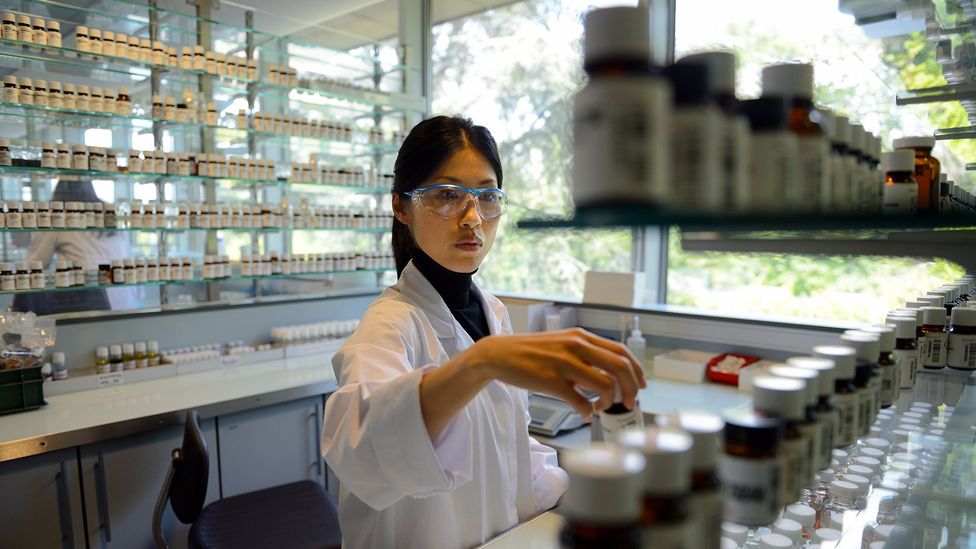
Odours are often complex combinations of molecules that can trigger more than one olfactory receptor at once (Credit: Eric Feferberg/Getty Images)
Even now, though, as the world of entertainment has become more high-tech, and immersive with virtual reality headsets and promenade theatre, odour remains the one element that is elusive and hard to replicate. But while Duerinck is determined his efforts won’t stumble as others have done, he’ll need to overcome four major challenges that have meant we’re still not able to experience the acrid trace of gunpowder during an on-screen shoot-out, the intoxicating perfume of a femme fatale or the honest whiff of a sweaty action hero.
Perhaps the most fundamental problem is that we don’t yet fully understand how our sense of smell functions. It was only in 1991 that two scientists at Columbia University in New York published work that finally revealed that our sense of smell relies upon some 1,000 different genes – about 3% of our total genome – that code for receptors that occupy a small area of tissue that lines the upper part of our nasal cavities. Each cell in this olfactory tissue expresses just one type of receptor, but together they allow us to detect around 10,000 smells when different odour molecules land on them, triggering nerve pulses to our brains.
The two scientists – Linda Buck and Richard Axel – were awarded the Nobel Prize in Physiology or Medicine in 2004 for their work, but exactly how an odour activates our olfactory receptors to send signals is still debated by scientists.
Scent isn’t like colour, where we can do the RGB or CMYK and replicate whatever we want – Saskia Wilson-Brown
Saskia Wilson-Brown, founder of the non-profit Institute for Art and Olfaction in Los Angeles, California, explains that there are two competing theories as to how our noses work. The first suggests that when a molecule passes our olfactory receptors, weak electrostatic forces between the atoms trigger a vibrational energy. These vibrational frequencies are translated into electrical signals, by which data on the smell can be delivered to the brain and so processed.
The second, and more widely supported theory, is that scent molecules may act more like a key in a lock, and so instructs the nerve signals to the brain in this way. Wilson-Brown says developing an artificial scenting device is akin to asking a Medieval artist to reproduce a true-to-life painting before they have grasped the basic tenets of perspective.
“Scent isn’t like colour, where we can do the RGB or CMYK and replicate whatever we want,” says Wilson-Brown. “Every smell has its own components.”
While some odours are triggered by single molecules, most are caused by multiple odorant molecules and each of these will often trigger multiple receptors. And although certain chemical groups found in odourants seem to play a greater role in smells than others, it is difficult to predict what smell a molecule will produce from its chemical formula alone. A good example of this can be found in three chemically similar molecules known as lactones. Although they are closely related with similar chemical structures, one has a minty odour, the other a buttery character and the third has a camphorous smell.
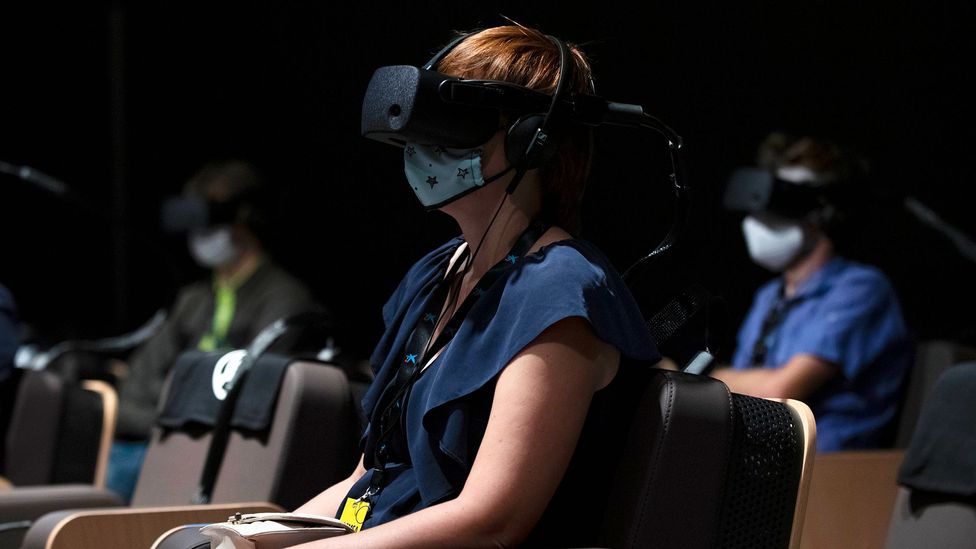
Virtual reality has made entertainment even more immersive by replicating the sight, sound and feel of real worlds (Credit: Josep Lago/Getty Images)
This all makes predicting and recreating smells artificially on demand extremely difficult, particularly as much of the work on artificial odourants is closely guarded by secretive multinationals.
“We don’t have databases to reference, or help us understand it,” says scent strategist Olivia Jezler, founder of the Future of Smell, a consultancy that develops scents for brands including the World Economic Forum, Victoria’s Secret and Dior. Instead, she and her colleagues must largely rely on trial and error. “All the really good fragrance research is housed in the labs of five companies in the world.”
The second hurdle is more cultural than biological: smell has an image problem. Smells are considered a little infra dig, a legacy of philosophers like Plato who deemed the body inferior to the ideal. “Scent is the ultimate in realism, something that even if you cannot see, it has to physically penetrate your nose,” says perfumer Nadjib Achaibou, who works for the fragrance producer Symrise.
Jezler agrees. She herself has worked in the lab at the University of Sussex, mapping scent and the other senses, but says such academic rigour is rarely applied. “Smell is considered to be the lowest [grade] of the senses, and it’s one of the least studied as a result,” she adds. “But it’s the only sense where the stimuli has a direct connection to our brain – molecules travel up the naval passageway and directly bind to the olfactory receptors and transmitted to our amygdala,” she continues.
The odours we find repulsive are often highly individual and dependent on tiny differences in our genes, making it tricky to find the right amount of an odourant to release without some people finding it overpowering
She also theorises that this year’s pandemic might inadvertently help bolster the perceived importance of scent. “People have realised that, since losing your sense of smell is a way of diagnosing Covid-19, just how important it is to us.”
There’s an additional issue of ickiness. We also tend to be more sensitive to smells we find disgusting, but the odours we find repulsive are often highly individual and dependent on tiny differences in our genes, making it tricky to find the right amount of an odourant to release without some people finding it overpowering.
Filmmaker Grace Boyle has worked extensively with artificial scent, including on the 360-degree movie Mundukuru. She says that smell is often regarded as being of lower importance than other senses, which may also be holding back progress in the field. She runs The Feelies, an immersive video production company named after and inspired by a similar setup in Aldous Huxley’s Brave New World.
Boyle says that odour is often relegated to an afterthought in the creative process, which results in it being gimmicky. For scent to work as a component in entertainment, she adds, it must be considered from the outset, baked into a script.

The Scentee device used refillable cartridges that could dispense a range of smells through a mobile phone app (Credit: Piero Cruciatti/Alamy)
“You don’t write a piece for the clarinet and bash it out on the piano, and expect it to be just as effective,” Boyle says. “All three stages – writing, shooting and delivery – need to be truly multisensory.”
Boyle instead suggests using scent in more subtle ways in a production. Rather than wafting the smell of bread into a headset while a scene takes place in a bakery, for example, it might be better to use the killer’s cologne to signal to the audience that he’s broken into a room where the protagonist remains unaware of his presence. It would be the olfactory equivalent of the music that builds tension in a scene.
A third issue with delivering scent as entertainment is money. Costs certainly inhibited the success of Aromarama and rivals – retrofitting movie theaters to install scenting systems alongside the projector was expensive, reportedly costing around $30,000 at the time, or just over $250,000 (£183,500) per screen, today when adjusted for inflation. Even now, as the focus shifts to more personal scenting devices like the Scentronix, price remains a barrier.
We also found that people couldn’t be bothered to refill the cartridges – and so it was like an inkjet printer that was always running out of a specific ink – Adrian Cheok
Jacki Morie, a virtual reality expert who spent a decade at the Institute for Creative Technologies at the University of Southern California before founding her own spin-out company, has been working in the artificial scenting field since the 1980s. She has trialed various devices over the decades – her latest is a collar, where scent is delivered on a filter paper rather than via spray. This makes it easier to rotate through smells quickly, as so few molecules are actually released, she explains. “We have been stymied by the fact that people don’t want to invest because – well, Smellovision,” she says. “If I had seed funding – say around $100,000 (£73,400) – I’d have dozens of these devices out for developers to test by the end of the year. But investor after investor wants big return on investment. They want something scalable, and ask ‘how will you sell 500 million units within five years?’ There’s just not a market for that now.”
Her cause hasn’t been helped by the slow consumer uptake of virtual reality headsets, which have not yet gained the momentum expected. But others worry there’s a final, simpler reason: lack of interest in digital scenting.
David Edwards is a bioengineer at Harvard University and inventor of a “digital scent speaker” he called Cyrano. Launched in 2016, it was a cartridge-based system that could generate around 10 or so different smells, with each unit costing $49 (£36).
“We generally found that consumers just didn’t get it,” he recalls. Most Cyranos devices ended up gathering dust on desks and the device was soon discontinued.
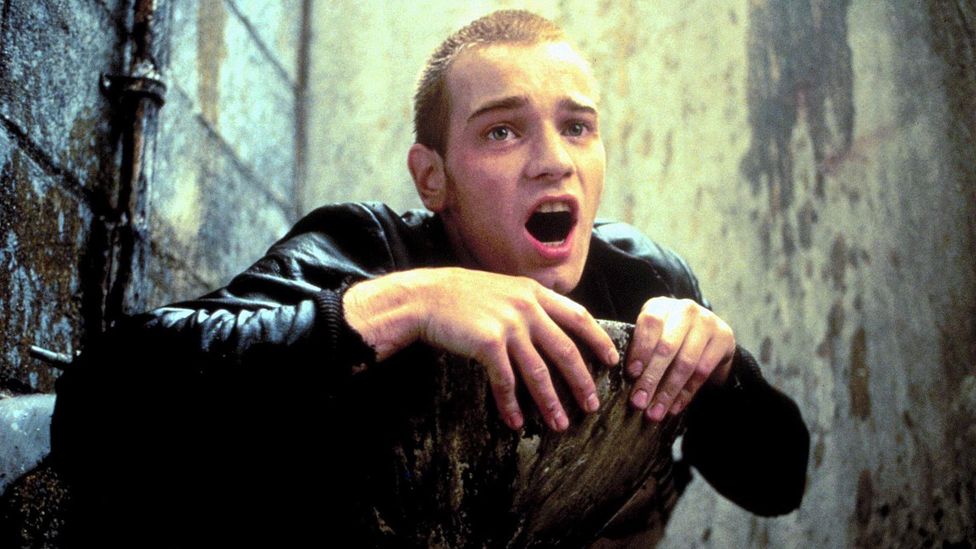
There are some movie scenes that filmgoers might prefer not to be enhanced with realistic odours (Credit: Channel Four Films/Alamy)
Much the same fate awaited the Scentee, another cartridge-powered gizmo based on research by engineer Adrian Cheok, the founder of Malaysia’s Imagineering Institute who also teaches at i-University in Tokyo. A local entrepreneur repurposed his research on smell to developing a pocket-sized toy. It cost $30 (£22) when it went on sale in 2013, but was quickly discontinued.
Most of the devices, Cheok says, ended up bought in pairs by young couples who used them to send the smell of chocolates or roses to each other remotely. “It was fun for them for a while, but how many times do you want to do that?” he says. “We also found that people couldn’t be bothered to refill the cartridges – and so it was like an inkjet printer that was always running out of a specific ink.” The narrow range of smells, and so repetitive nature of the product, also proved a key drawback and the built-in inconvenience – that cartridge could be empty at a crucial moment – and poor usability doomed it, too.
Nonetheless, the failure of the Scentee prompted Cheok to shift his focus and he’s currently working on a new scent-delivering device which operates in an entirely different way. It directly stimulates the olfactory receptors in the nose via electrodes that are inserted through the nostril. It might solve the problem of replacing the scents with expensive cartridges and he’s seen promising results from lab tests, but recognises this equipment faces problems all its own.
“Will people sit in their living room and stick electrodes in their noses?” he asks. “Even in normal times, probably not, but in the age of coronavirus, it’s the worst possible research you can do. I’ve not worked on it this year at all.”
Source: The people who want to send smells through your TV – BBC Future

